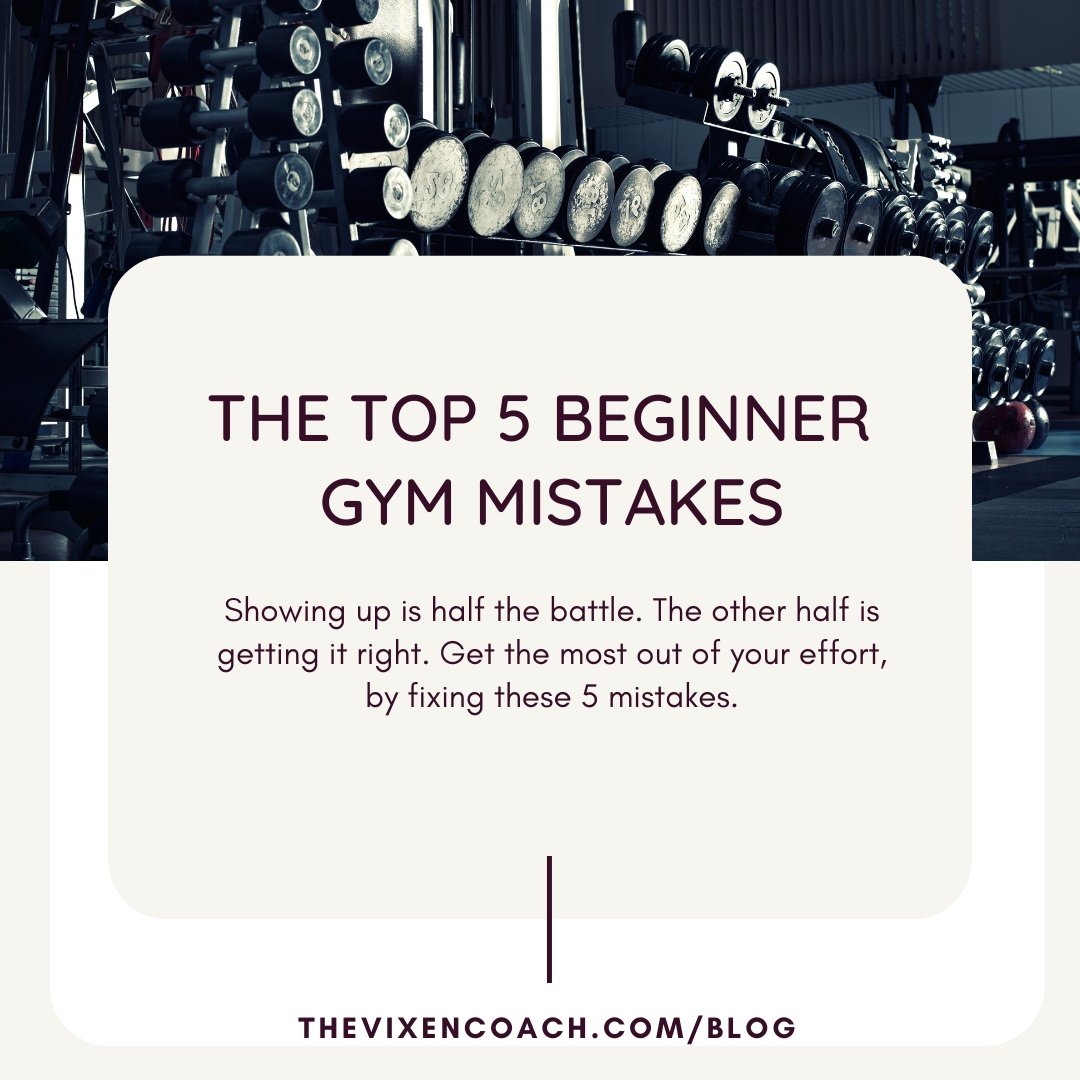The Top 5 Beginner Gym Mistakes
Starting a fitness routine can be overwhelming. As a newbie, you’re going to make mistakes. No judgement! As a pro, I’m still making mistakes and learning new strategies. But after several years in this game, I’ve noticed some common mistakes among new gym goers. I’m willing to bet you’ll find yourself somewhere on this list.
Check out the top 5 beginner gym mistakes and how to fix them!
Mistake #1: Doing Random Workouts
If your goal is to simply move more and feel better, then you can get away with doing random workouts and winging it. However, if your goal is to tone, build, or shape your body, then doing random workouts will delay or hinder your results.
Sometimes, beginners believe in the idea of muscle confusion—that if you switch exercises frequently, you’ll avoid a plateau or that your muscles need to be “confused” to grow. But this is a myth and isn’t supported by research. Research actually suggests the opposite.
Solution: Use progressive overload and carefully planned variety. In simple terms, progressive overload is adding more stress—or doing more—over time.
The only way you can accurately gauge if you’re doing more over time is if you are doing the same thing or something similar from week-to-week. If you were to see my typical workouts or that of any other professional, you’d probably think they were too repetitive or boring. But what it lacks in excitement, it makes up for in effectiveness.
The most common ways progressive overload is applied is by increasing the load (weight), increasing the reps, and increasing the sets. But there are many more ways!
Mistake #2: Trying to Copy Your Favorite Influencer
Influencers and pros are great for three things: inspiration, motivation, and getting new ideas. That’s it. They should not strongly be influencing your workouts or nutrition. There are two reasons why this is a mistake:
You can eat, train, and rest the exact same way as someone else, and you probably still won’t look like them. We all have different genetics, skeletal anatomy, health histories, and circumstances.
What they do may not be biomechanically correct for your body. Take squatting, for example. Some people squat upright. Other people squat with a slight lean forward. Both methods are correct, but which method is best for you, depends on your proportions.
The bottom line: copying someone else can only get you so far.
Solution: Your training and nutrition should ideally be customized. If you’re unable to find a personal trainer in your area, I’m accepting new clients. You can get more info and apply HERE.
Also, my nutrition guides can teach you the foundations of what to eat and how to eat. You can find guides geared towards weight gain or weight loss HERE.
Guides can help you build a nice foundation, but customized help will always be the best way to go! You can get more info on how to apply to my nutrition coaching services HERE.
Mistake #3: Believing That You Have to Barbell Squat
Most people believe that there are must-do exercises. There’s this idea that you have to barbell squat, or barbell deadlift...or do any exercise a particular way. This is not true. There are no must-do exercises, when it comes to muscle building. (And again, if you want to “tone”, sculpt, or build any part of your body, then you are muscle building!)
Forcing yourself to do exercises that don’t agree with your body can possibly be dangerous.
Solution: If an exercise doesn’t feel right, and you’ve gone through the proper steps of improving your form and mobility, find another exercise that’s biomechanically similar.
Choose exercises that check off three points:
they align with your goals,
they align with your abilities,
they align with your preferences.
Mistake #4: Using Soreness to Gauge The Quality of Your Workouts
You probably have experienced feeling sore, the day after going to the gym. This is normal and a lot of beginners chase soreness. They believe if they don’t feel sore after a workout, then they didn’t work hard enough.
Using soreness to measure the effectiveness of your workout is a terrible strategy for two reasons:
Soreness doesn’t indicate a good workout, and lack of soreness doesn’t indicate a bad workout. Most of the time, soreness occurs simply because you tried something new or did exercises that stretched your muscles.
Soreness can be counterproductive. A little soreness is normal, but if you’re frequently sore or it’s painful, it’s likely to hinder your workouts or training intensity.
Solution: Measure the effectiveness of your workout by reliable indicators, such as improved form, better recovery, increased range of motion, strength progress, and if you’re actually enjoying it.
Mistake #5: Not Tracking Your Progress
This relates back to mistake number one.
Beginners usually track their progress through pictures and before/afters, but they don’t track their progress in regards to performance. If you’re applying progressive overload, you need to accurately gauge if you’re doing more from month-to-month, and year-to-year. If you don’t track your performance progress, you’ll struggle with knowing when to advance to higher performance goals.
Solution: If your goal is to tone or shape your body, you should be lifting weights and you should be tracking every workout. Take a look at one of my entries from earlier in the year:
You can see I took notes on almost every factor that influenced my session:
muscle group worked
time and length of workout
perceived rate of exertion or how intense the session was supposed to be (70%)
exercises performed
sets and reps
adjustments made during the session
This is how you should be documenting your workouts, if you hope to progress from the newbie/beginner level to the advanced level. The current fitness notebook I’m using is different, but it’s amazing. It can be found HERE.


